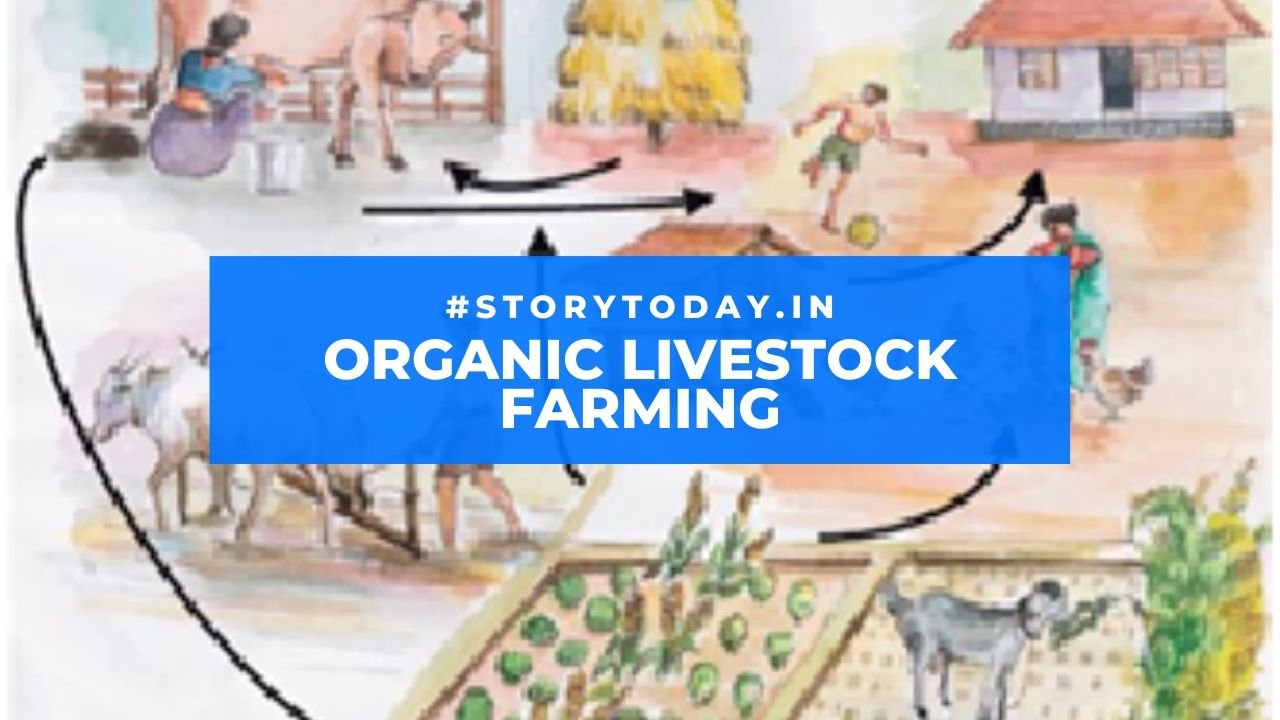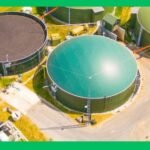IMPROVED PRACTICES FOR BACKYARD POULTRY FARMING
What is Backyard poultry farming?
Traditionally backyard poultry rearing system is practiced with low input or no input business characterized by indigenous night shelter system, scavenging system with little supplementary feeding, natural hatching of chicks, poor productivity of birds, local marketing and no health care practice. Backyard poultry farming plays a major role in the rural economy and women empowerment. According to the National Action Plan for Egg & Poultry-2022 (NAPEP), backyard poultry accounts for 20 per cent of India’s poultry sector, which is worth over ₹800 billion. Across the country, around 30 million farmers are engaged in backyard poultry (19th Livestock Census of India) and contribute 30 per cent to the national egg production.
Why Backyard poultry farming?
- Low initial capital investment for farming.
- Ensure short financial return due to short reproductive cycles.
- Farm management is easier i.e. rural women and youth can easily go for farming.
- Feed cost is reduced as part of the daily feed requirements can be obtained from scavenging, kitchen waste and spent/spoilt grains.
- Provide additional and complementary income to the rural households.
- Helps in increase the soil fertility in backyard (20 adult chicken can produce 1.5-2 kg of manure/day).
- Produce of rural poultry farming fetches high price compared to those produce from intensive poultry farming.
- Rearing of local poultry can contribute to family nutrition especially expectant women, feeding mothers and children in rural / tribal populations.
- Birds can efficiently convert the wastes material (fallen grains, kitchen waste, vegetable waste, green grass, insects, ants) into high quality animal proteins for human consumption.
Some improved poultry variety and their characteristics
The production and reproductive capacity of indigenous/desi birds is very low. They can produce only 50-70nos eggs/hen/year and body weight gain is very low. Indigenous Chicken reaches sexual maturity at about 6-7months of age. There are large numbers of improved chicken germplasm developed by different public and private organization suitable for backyard farming.
Some improved dual purpose chicken varieties suitable for backyard farming are
Comparison of production performances of Desi chicken with improved chicken variety
| Characteristics | Desi chicken | Improved chicken |
|---|---|---|
| Feed conversion ration | 3 | 2.2 |
| Egg weight | 48-50g | 60g |
| Age at maturity | >180days | <160Days |
| Number of egg/year | 50-70 | 120-140 |
| Body weight at 6weeks | 500g | 1.12Kg |
| Nos. Of days for 1.2Kg | 90days | 44days |
Housing
Scientific housing of poultry is important to provide shelter, prevent from predators, diseases prevention etc. For backyard farming, a low cost poultry house made of locally available materials like bamboo, wooden post, and plunk. Some important points to be remembered during construction of poultry house include.
- Location: The location of the house should comparatively dry, raised area
- Orientation: It should be constructed with their long axis in East-West direction to obviate direct sunlight and rainfall into the building.
- Floor: It should be easily cleanable; concrete floor and/or machang type house made with locally available materials.
- Space: A space of 1.5-2sqft/bird should provide for proper shelter.
- Bedding materials: Rice husk, saw dust, chopped straw etc.
- Ventilation: Proper ventilation is required to circulate fresh air inside the poultry house.
- Sanitation/Disinfection measures are must for prevention and control of diseases, thereby healthy and disease free flock.
Management of Chicks
Before arrival of the chicks the brooding facility must be arranged i.e. cleaning and disinfection of brooder house, feeder, drinker, proper place of clean, dry mould free bedding/litter materials (saw dust, rice husk etc.), spread of paper over the litter materials etc.
Some important points to be remembered during brooding are-
- Brooding care through a brooder must be taken for a minimum period of four week especially during winter.
- Brooding temperature should be 350C (950F) which should be reduced at a rate of 2.70C (50F) every week.
- Immediately after arrival, chicks should not be fed instead they should be provided electrolyte glucose water only (i.e. 10g glucose for 100 chicks in water) or feeding the chicks with anti-stress formula/B-complex (e.g. Ambiplex).
- For the first 2 to 4 days feeder should not be used instead spread the feeds over the old newspaper.
N.B: Brooder is an artificial hen (mother) to provide warmth and light for the chicks to eat and drink during the first 3 to 4 week of age.
Free Range management
After completion of brooding age the birds are let loose for free range and provide night shelter with supplementary feeding during morning and evening time. A flock size of 25-50 per farm family is suitable depending on availability of free range, waste grain, insects, intensity of green vegetation to increase subsidiary family income. A male: female ratio of 1: 5 may be maintained for fertile egg production. The night shelter needs to be provided for protection from predators and adverse weather.
Feeding Management
Birds are generally fed through scavenging condition with supplementary feeding except during brooding period. During this stage of brooding period, commercially available starter feed must be fed. The supplentary feeds may be prepared with combination of various feed ingredients like ground maize, soyabean cake, groundnut cake, Sesame cake, fish meal, mineral mixture, salt which are easily available in market. During egg laying stage, sources of calcium like lime stone powder, stone grit, shell grit @ 4-5g/bird/day should be supplemented.
Various types of commercially available feed may be provided to the chicken depending on age.
- Starter feed: From 0 to 7weeks of age.
- Grower feed: From 8 to 20 weeks age.
- Finisher feed: From 20 weeks onwards.
Following are the tentative requirement of feed and water during brooding period-
| Age (weeks) | Feed/chick (g) | Water/chick (ml) |
|---|---|---|
| 1 | 7 | 14 |
| 2 | 14 | 30 |
| 3 | 22 | 50 |
| 4 | 30 | 60 |
Health Management
There are various causes of disease in birds which may be infectious (Bacteria, virus, fungi) or non-infectious (Nutritional deficiency). The main sources of disease spread in poultry are contaminated feed, water, equipment, wet litter, close contact with attendants/visitors, flies etc. Biosecurity measurement must follow for prevention and control of infectious diseases. The birds reared under free range system are very prone infestation with endoparasite and ectoparasite. Therefore, schedule deworming must be done to the poultry flock.
Some commonly used anthelmintic used for deworming are Albomar susp (2.5% w/v) @ 30-45ml/100birds orally or Albomar powder (15%w/w) @5-7.5g/100birds orally.
Immunization/vaccination:
Poultry vaccines are widely applied to prevent and control contagious poultry diseases especially birds against viral disease is utmost important as it has no specific treatment after outbreak of the disease. The following recommended vaccination schedule may be followed as preventive measures under backyard farming conditions-
| Age | Vaccine name | Dose | Route of administration | ||
|---|---|---|---|---|---|
| 0-7th Day | Ranikhet disease (RD F)/ LaSota strain |
1-2 drops | Intraocular or Intranasal | ||
| 12-14th day | Infectious Bursal Disease (IBD) live |
|
Intraocular or Intranasal | ||
| 28-30th days | Ranikhet disease (RD F)/ LaSota strain (Booster) |
1-2drops | Intraocular or Intranasal | ||
| 6th week | Fowl pox (live) | – | Wing web (Double prick) | ||
| 8th week | Ranikhet disease (RD) R2B Mukteswar strain) | 0.5ml | Intramuscular or Subcutaneous | ||
| 12th week | Infectious Bursal disease (IBD), Booster | 0.5ml | Intramuscular or Subcutaneous | ||
| 15th week | Ranikhet disease (RD) R2B Mukteswar strain), Booster | 0.5ml | Intramuscular or Subcutaneous |
Point to be remembered during vaccination
Vaccine storage
- All vaccine should be protected from light.
- All live vaccine must be stored between temperature 2-80C and preferably in freezer.
- Killed vaccine should be stored below 80C and never be frozen.
- Vaccine diluents may be stored in room temperature but prior to every vaccination corresponding should be pre-chilled.
Successful vaccination
- Always vaccinate only healthy birds and keep them comfortable by providing adequate heat, feed, water and good ventilation
- Procure vaccine from reliable source and always transport in vaccine carrier with ice pack to maintain cold chain.
- Use sterile needle and syringe for reconstitution.
- Reconstituted vaccine should not be kept for longer period but use within 1hr.
- Vaccination should be done during cold hours of the day.
- Exact vaccine dose should be administered as per manufacturer recommendation.
- Diseased birds should never be vaccinated which may further aggravate the disease due to stress or impaired immune system.
- Dispose the unused, empty vials properly by burning or deep buried.
Author: Dr. Monuj Kr. Doley, Subject Matter Specialist (Animal Science), Krishi Vigyan Kendra, Karbi Anglong & Dr. Neethi Baruah, Jr. Scientist, RARS, Diphu, Assam Agricultural University / Contact No. 8638251626



